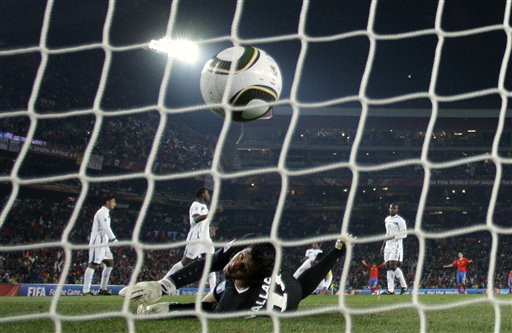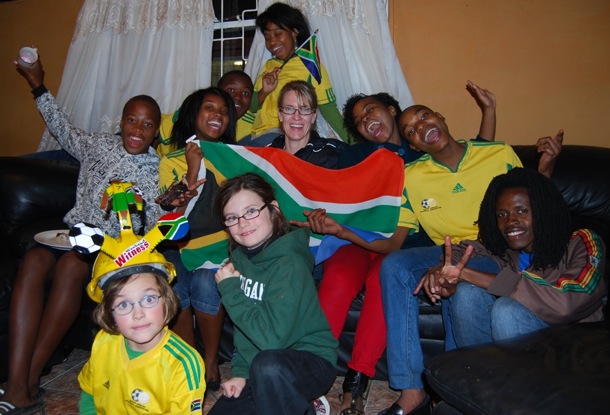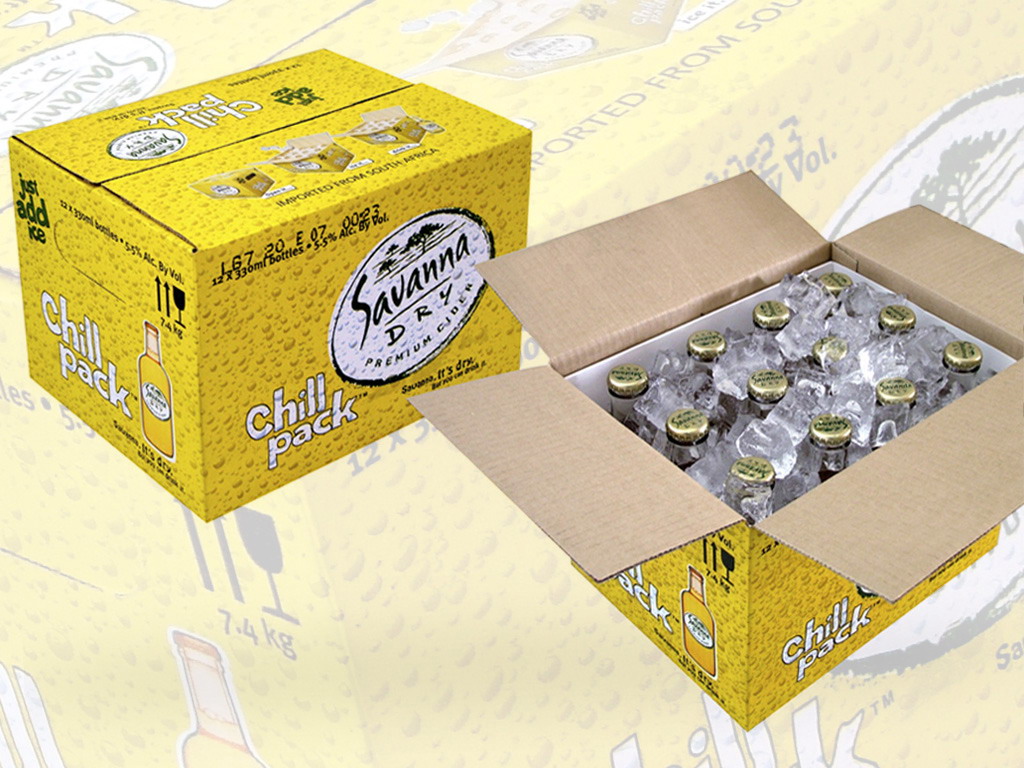
Spain’s gift to the world is fútbol romantico.
We got that tonight, as Spain got back on track with a 2-0 win over Honduras at Ellis Park. 54,000 came to enjoy Xavi’s midfield orchestration, David Villa’s glossy finishing, and the choral play of the Spanish side. It could have been 4- or 5- nil but Torres missed easy chances and Villa blew a penalty (and a chance for a hat trick).
But the story for us was getting to the game. I had an interview scheduled for 3p.m. at Radio 702 in Sandton. An enjoyable hour in the studio with the host, Jenny Crwys-Williams, who had Wimbledon and Portugal tearing North Korea to shreds on separate screens as we talked about my new books, Laduma! (2010 edition) and African Soccerscapes. (Click here to listen to the interview.)
At 4pm Ignazio and I went to the Sandton City mall to buy our park-and-ride tickets for tonight and later in the week. The mall is a massive, glitzy babylon of shopping. Alienating in the extreme, it could be anywhere in the USA or Western Europe. But it is the new economic center of Johannesburg.
Clock was ticking. Finally at 5pm we have our park-and-ride tickets and head out into crazy rush hour traffic. The Spain team is getting on the bus at the hotel across the street! Nice. The traffic is thick with mini-buses taking the working class back to the townships, as well as SUVs and an assortment of Benzes and Beemers heading to Gauteng’s gated communities. We are les than 5km from our flat and 45 minutes later we pick up the rest of the crew. Destination: the seat of South Africa’s Supreme Court: Constitution Hill—an ex-prison where Gandhi, Mandela and thousands of less famous freedom fighters and common criminals were once held.
We miss the turn for Con Hill. Agh! Suddenly, we are in a starkly different Johannesburg from where we were an hour earlier. Gone are the malls, the high rises, luxury apartments, and privatized heavily policed spaces. Hillbrow and Park Station are probably one of the most densely populated urban areas in Africa and perhaps the world. The rules of the road are suspended here. Igna is negotiating pedestrians everywhere while I try to read a map in the dark. Even the cops don’t know how to get out of here! But a good Samaritan bus driver at the wheel of a World Cup park-and-ride bus gives us directions. Ayoba! 10 minutes later we make our final approach to Con Hill, at the top of the ridge above Hillbrow. We know we’re close because the first Joburg police officer since Sandton is directing traffic. After almost burning out the clutch waiting in line to enter the multilevel parkade, we arrive. Kick off is more than hour away. We can relax.
Once on the bus, the kids joke about how many goals Spain will score on Honduras. I film the ride through Hillbrow and ‘interview’ Sophie who tells me it’s going to be 2-0 for Spain. Our child has a gift (and a smack after Torres). The crowd on the bus seems mostly South African, but we hear and talk with Americans, Costaricans (supporting Honduras) and Mexicans too. The bus drops us off in gritty New Doornfontein, where a long alley leads to Ellis Park—a beautiful stadium for football, not a bad seat in the house. As we approach the venue, Ignazio’s son Marco blares out his favourite South African phrase: ‘Ke nako!’
Category: Hosting
Woke up in Limpopo early to make it back to Joburg in time for USA-Slovenia at 4pm at Ellis Park. David’s gone to the Greeks so Sergio and I take the people’s taxi to the park-and-ride facility at Wits University.
Everything is well organized and relaxed. Parking lot is nice and full at 2:15. 20-something shirtless Americans with USA painted on their chests are tailgating (!) to very loud Rage Against the Machine. The making of American fandom.
A long line (a queue in SA English) snakes down several hundred yards. People draped in USA flags, SA hats and scarves, and a veritable UN of football accoutrements. ‘Serbia scores!’ ‘Germany down to 10 men!’ News travels up and down the queue.
We board the double-decker bus, sit with Japanese fans in Japan jerseys. Bus glides through Braamfontein and into gritty Hillbrow before emptying us into the labyrinthine streets of post-industrial Doornfontein—the home of Ellis Park. 45 minutes to kick off. Hard to believe we were close to Zimbabwe just a few hours ago.
No sign of heightened security. SA Police working security after Stallion guards walked off the job in a wage dispute. No hassles despite the usual lines at the metal detectors and bag search area. Everyone seems in a good mood, particularly several drunken, flag-waving Americans chanting “U-S-A! U-S-A!” Sergio and I go through the turnstiles and ascend through the circular ramps (memories of WC ’94 at Giants Stadium) to the upper level of the main grandstand, the media and VIP section to our far left.
The steep gradient of Ellis Park means we are right on top of the action, at the corner flag of the end where every major action would later unfold. We chat with a jolly middle-age couple draped in Slovenian-American-South African paraphernalia in front of us and get acquainted with a Johannesburg family and a trio of Americans from LA (Orange County). It’s chilly, but not freezing.
Vuvuzelas make it impossible to hear anything but the chorus of the wailing goats. National anthems are drowned out except that the American fans are belting out, almost belching out, the “Star Spangled Banner.”
The game begins. The Americans are looking strangely out of sorts, while Slovenia’s 4-4-2 is working well, easily thwarting any US attacks and threatening Tim Howard on the other end. Torres and Findley look way out of their depth. Donovan and Dempsey are hiding on the left and right midfield flanks. Slovenia scores a nice goal from 25 yards out and a few minutes before halftime they do it again, beating the offside trap.
“Father Bob needs to sub Torres and Findley and light a fire under the lads,” I say to Sergio. He points to the empty ring of corporate seats, a familiar sight in every WC stadium; Sergio asks why those tickets weren’t given to South Africans to enjoy the tournament they paid dearly to host. Good question.
The second half brings the needed substitutions and immediately we see the results. Donovan breaks on the right (he had been on the left in the first half) and scores with a powerful blast in the roof of the net from a close but tight angle. USA back in it. But the game then enters another dull, guarded phase of shadow-boxing.
Then pressure builds in the last 10 minutes. Altidore finally makes his presence felt; nudges a header into the box, Michael Bradley believes, spurts unguarded from the top of the box and toe-pokes it into the net! 2-2!! 15,000 Americans in the 45,000 crowd explode with joy. Another couple of minutes and Edu scores off a Donovan free kick . . . a miracle! But no, the ref calls off our celebrations for a mysterious infraction not even the Slovenians appeal for. That’s how it ends: 2-2. ‘We wuz robbed.’
It’s night as we leave Ellis Park. We quickly make our way to the bus that takes us back to the Wits park-and-ride. Algeria’s 0-0 dinnertime draw with England ends an exhausting but thoroughly exhilarating two days of road-tripping through South Africa. Nelspruit is two days away.
The Morning After in Cape Town. Bafana gave folks something to scream about. Here’s Fortune to tell us what he thinks.
Fortune is surviving as a Cape Town Car Guard. A thankless gig. If you are renting a car to follow your team, don’t forget to give a good tip to your Car Guard. I ran into Fortune many hours later in the dead of night. He was waiting for a couple of drivers. Fortune had much to say about how different folks treat him. One can also learn much from your Car Guard. Fortune is a representative figure, one who deserves to more fortune.
Here’s a little pre match Cape Town passion. Check out the Sister hedging her bets rocking it down the street in her España shirt. Share the love!

After two days of rain, a bright sun ushered in June 11, 2010: opening day of Africa’s World Cup. A neighbor was vuvuzela-ing at 7am. The girls played soccer outside while we did some chores around the house. Ate an early lunch, donned our makarapas, team shirts, vuvuzelas, grabbed a flag and headed out.
Thabo met us on campus to take us to Imbali township where he lives. Driving in the Izichwe Youth Football microbus, and joined by four Norwegians from Viking Stavanger Football Club (established in 1899) — one of the Izichwe sponsors — we joined the steady flow of ‘Proudly South African’ vehicles, wailing goats (aka vuvuzelas), drivers on cellphones and distracted cops. “I’ve never seen Pietermaritzburg like this,” said Thabo; “It’s like Christmas has arrived early!”
15 minutes later we were in Imbali, the largest black township in the city. The place was buzzing with excitement. The public viewing area was set up at the football ground of the Indumiso campus of the Durban University of Technology. A single covered grandstand, mostly grass pitch, and a stage and big screen in front of one of the goals. My daughters and I took the ball out and our impromptu game immediately attracted several local boys.
A wonderful a cappella group in Bafana jerseys performed, followed by a group of older women dancers and local kwaito stars BIG NUZ. Then something strange. As Bafana and Mexico stood solemnly on the pitch at Soccer City the crowd of several thousand in Imbali drowned out the national anthem courtesy of the infernal vuvuzelas. Shame!
A few minutes into the game we left for the comfort of our host’s home in the township’s oldest neighborhood, where in the 1980s the police battled the United Democratic Front against apartheid. We had a blast watching with Thabo’s family and friends (see photo). Exploded with joy at Tshabalaaaaala’s perfect strike early in the second half. Neighbors dancing in the street! Is a South African miracle about to happen?
Sadly, no. Captain Mokoena’s tired legs kept Marquez on side and the experienced Barcelona center back coolly finished his chance. 1-1. One more palpitation: Mphela hit the post with a minute left. Sho! Despite the disappointment, the consensus was that the draw was fair. Bafana are undefeated! As we drive off later that evening, the shebeens (taverns) are doing a roaring business, but for street carnivals we’ll have to wait for Uruguay on Youth Day, June 16 — the 34th anniversary of the Soweto Uprising.
The Pre World Cup Bevy

It was my aim to dispatch a report from some bar full of Uruguayans before the match in Cape Town yesterday. But in age old football supporter tradition, I was late.
South Africa is a serendipitous place. And proper South African football supporters tend to be late too. Before I could figure out my next move, my name was being called. It was Shirley out on the wing (across some Dutch named street I could not pronounce), waving at me, asking for the pass, and gesticulating toward the rest of the girls in the box. Shirley was going to whip one in. “We are to going to help Bafana score a goal”, she said. Yebo, Ladies! (*Shirley and Co. have been my regular healthy lunch spot hosts in Cape Town. It was only proper that I be in their company during their afternoon off.)
But first must come the pre match bevy. The Banyana like their cider. And I was honoured for it to be my shout. Shirley claimed to know just about every manager and cashier in the corner Spar. We jumped the queue. Eventually a large lady in a tracksuit, a sort of South African Fatty Foulkes, stepped in to ensure democracy at the entrance to the Spar. I won’t share what Shirley had to be say about her. It was X Rated Football language!
Melissa Block of NPR’s ‘All Things Considered’ interviewed me about soccer’s long history in Africa. Soccer was brought to Africa by British colonials in the mid-1800s. The first documented game on the continent was played in South Africa in 1862, a year before soccer’s official rules were codified. As I argue in African Soccerscapes, soccer has been an important sport in Africa for as long as it was played in Europe.
Click here to listen to the interview and read a transcript.
Was also interviewed by and quoted in this New York Times article: Soccer Returns to its Roots in Africa
